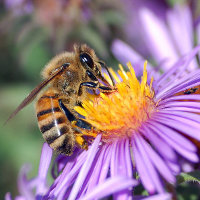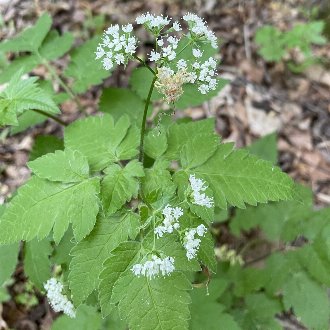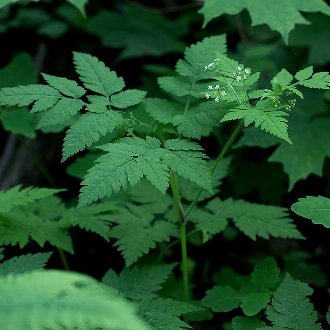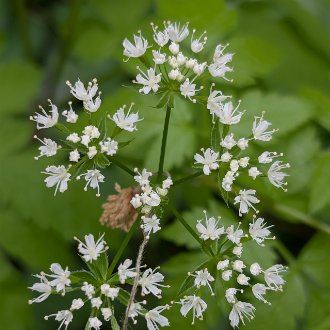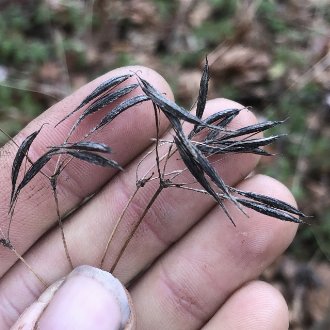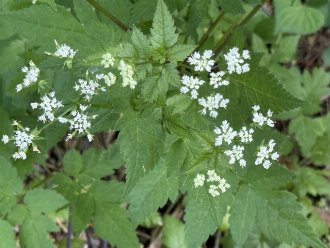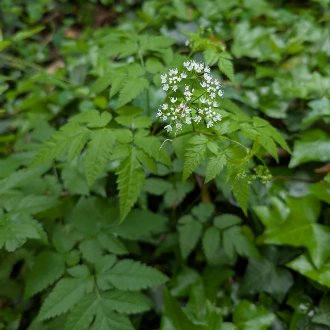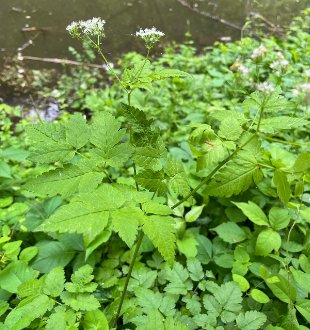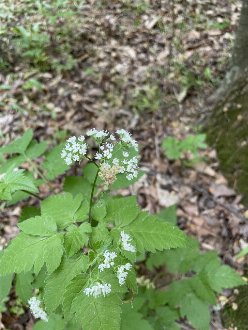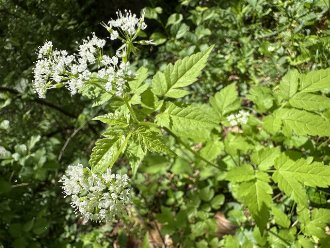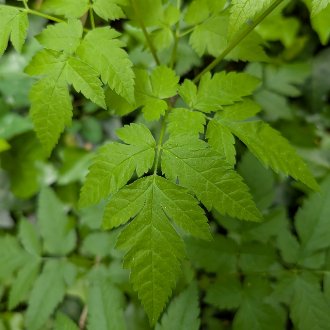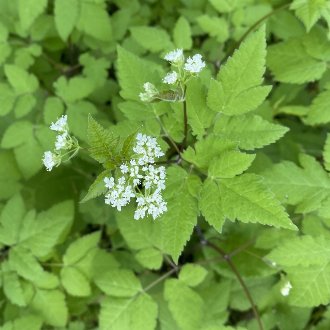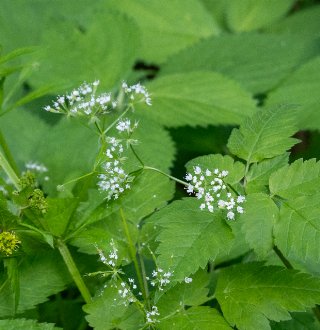Aniseroot (Osmorhiza longistylis (Torr.) DC.)
Also known as long-styled sweet-cicely, longstyle sweetroot, sweet cicely, long-style sweetroot, smoother sweet cicely.
↑Summary
A perennial native to mesic deciduous woods in eastern to central North America.
↑Range - Expand
| Legend | Color |
| Native | |
| Native or Not Present |
This tentative map is based on our own research. It may have limited data on Canada and/or Mexico, and there is some subjectivity in our assignment of plants as introduced vs. expanded. Read more in this blog post.
Although this plant occurs somewhere in each of these regions, it may only occur in a small part of some or all of them.
↑Similar Plants
↑Habitat
Aniseroot is found in mesic deciduous forests in eastern to central North America, usually in small gaps. It is most common in forests in ravines and other sheltered, sloped terrain, but also occurs to a degree on well-drained sites in floodplains and swamps. Anthropogenic habitats include wooded parks or gardens, and areas where large paths or small roads cut through deciduous forests.
It is usually found in mesic conditions, but it can occasionally be found in moist conditions as long as it is on a locally-well-drained site. It is rather demanding of soil conditions, typically requiring deep, loamy soil high in organic matter. Although it can occur on substrates where the underlying geology is clayey or rocky, and tolerates some degree of these materials at lower layers of soil, it needs loamy soil near the surface.
Aniseroot does best in dappled sunlight under a slightly open forest canopy, or exposures with some direct sunlight from a gap, and heavier shading for part of the day. In the south of its range it cannot survive in full sun, but in the north, it can survive in full sun, leading it to persist in forests that have been logged. In deciduous forests, it relies on small gaps formed by natural disturbances such as windthrow or the death of one or a few trees.
↑Life Cycle
Aniseroot is a perennial.
↑Uses
This species is occasionally grown in gardens, where it is valued for its attractive foliage and delicate flowers. Although it is demanding of soil conditions, many gardeners actively enrich and manage their soil, and grade their yards to create good drainage, thus creating the conditions this plant prefers.
The entire plant is edible; typically the leaves can be eaten raw, or tougher leaves cooked, and the root can be cooked. Caution is warranted, however, because this plant has some resemblance to extremely toxic plants, such as spotted water hemlock (Cicuta maculata).
↑Related Plants
There are numerous other Osmorhiza species in North America, all native. Of them, this species is probably closest related to both clayton's sweetroot (Osmorhiza claytonii) and purple sweetroot (Osmorhiza purpurea), but those two species are probably closer-related to each other than they are to this one.
After this genus, it is probably next-most-closely-related to the introduced sweet cicely (Myrrhis odorata) and the Anthriscus genus, also introduced here.
↑Notes
We recommend against the use of the common name "sweet cicely" as it is ambiguous, referring to a number of different species in the Osmorhiza genus, and more frequently, referring to sweet cicely (Myrrhis odorata). "Longstyle sweetroot" is perhaps another good common name, as plants of the genus Osmorhiza are often referred to as "sweetroots", and "longstyle" is both descriptive, and matches the scientific epithet longistylis. We have deferred to "aniseroot" for now because it seems more widely-used, including by iNaturalist and MBP, and it also helps one to remember that, relative to O. claytonii, this species has the stronger anise scent.
↑Links & External Resources
• Osmorhiza longistylis (Aniseroot) | Illinois Wildflowers (About This Site)
• Osmorhiza longistylis (longstyle sweetroot) | USDA PLANTS Database (About This Site)
• Osmorhiza longistylis | Go Botany (About This Site)
• Aniseroot | iNaturalist (About This Site)
• Osmorhiza longistylis (Sweet Cicely) | Missouri Botanical Garden Plant Finder (About This Site)
• Osmorhiza longistylis | Biota of North America Project (BONAP) (About This Site)
• Osmorhiza longistylis | NatureServe Explorer (About This Site)
• Osmorhiza longistylis | Missouri Plants (About This Site)
• Aniseroot | Maryland Biodiversity Project (About This Site)
• Osmorhiza longistylis (Aniseroot) | Minnesota Wildflowers (About This Site)
• Osmorhiza longistylis (Torr.) DC. (Aniseroot) | Digital Atlas of the Virginia Flora (About This Site)

